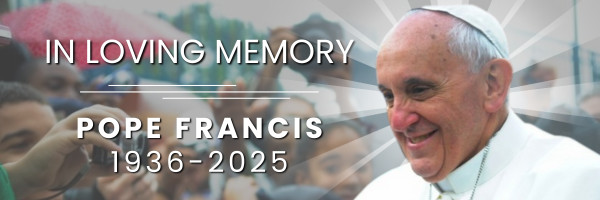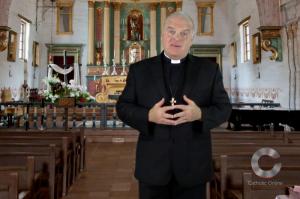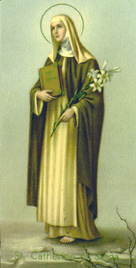A Honduran vacation in ruins
FREE Catholic Classes
McClatchy Newspapers (MCT) - The early-morning sun burnishes the stone temples to a golden sheen, while on their facades, serpents writhe, jaguars crouch, birds preen and gods grimace in a pantomime that has been going on for nearly 2,000 years. The silence is Âshattered only by the screech of a howler monkey living in the surrounding jungle.
Highlights
McClatchy Newspapers (www.mctdirect.com)
1/19/2009 (1 decade ago)
Published in Travel
In a few hours, the Âchiseling of Âarchaeological teams combined with the chattering of tourists will imbue this primeval scene with a sort of 21st-century immediacy, but now, just after dawn, when it's nearly deserted, it's easy to Âimagine the ghosts of ancient Mayans treading the sacred ground.
Copan, once one of the four major capitals of the Mayan world, is today Honduras' major tourist attraction. Along with its three sister cities _ Palenque and Calakmul in Mexico, and Tikal in Guatemala _ it gives visitors insight into an empire that stretched from Mexico's Yucatan across Belize, Honduras and Guatemala to El Salvador, encompassing most of Central America.
Although there is Âarchaeological evidence that the Copan Valley was Âinhabited as early as 1200 B.C., it wasn't until A.D. 426 that it was first ruled by a king (Yax K'uk' Mo', which means Great-Sun First Quetzal Macaw; successive monarchs had equally descriptive monikers, including names that translated to Smoke Monkey, Waterlily Jaguar and 18 Rabbit). By A.D. 750, the civilization had reached its zenith.
The 12-square-mile area of Copan includes more than 750 sites and 4,500 structures: temples, tombs, sacrificial altars and courtyards, as well as caves that are considered portals to the Mayan underworld.
Excavations reveal that Copan was a ceremonial center and meeting place for the Maya. From here they predicted solar and lunar eclipses; made Âcalculations on the movements of Jupiter, Mars and, some think, even Mercury; and interwove aspects of nature with a belief in supernatural forces. In the first system of writing in the New World, they carved all their findings on huge stone tablets called stelae. The most prominent of these monoliths recounts the life and death of the aforementioned 18 Rabbit, an eighth-century king and patron of the arts who was beheaded by a rival tribe.
Modern visitors to Copan enter the ruins from the Âwestern Mayan Road, the same route taken by the Maya and later by their Spanish conquerors. A cedar-lined alley leads to the entrance, which, on my visit, was guarded by five colorful macaws.
This is a good spot to pause and reflect on how Copan must have looked when it was discovered in the 16th century after having been swallowed up by the jungle and hidden for several centuries. Or to consider how it must have looked in 1839, when a local farmer sold it to American archaeologist John Stephens for $50, and how it continued to look until the 1930s, when the first excavation began.
Mayan kings might rest uneasily in their graves if they knew that many of Copan's greatest treasures now grace public museums, including the British Museum in London and Harvard's Peabody Museum, and assorted private collections; still, enough remains to titillate the professional and armchair archaeologist.
Most visitors gravitate first to the Acropolis, a large complex of overlapping step pyramids, plazas and palaces, or to the Great Plaza. Here, stone buttresses surround a grassy knoll where the Maya congregated to watch Âperformances of music and dance. Athletic contests were held at the opposite end of the plaza, and if you think today's fans are rabid, consider the Maya. Spectators, sitting in what might have been the world's first stadium seats, wagering jade, gold, houses, even themselves into slavery, should they lose bets on games that were a combination of soccer and basketball.
But if you pity the poor spectator who bet on the wrong team and found himself in servitude, consider the plight of the athlete who dropped the ball. Believing that the ball Âcouldn't touch the ground because the lords of hell would rise up in anger, the Maya had an effective penalty for a fumble: They sacrificed the fumbler.
Leaving the Great Plaza, most visitors next explore the funerary temple, where archaeologists think many of Copan's 16 kings are buried. At the temple entrance is an elaborate altar where the remains of 16 jaguars (representing the kings) were found. Next to the temple is the tomb of the royal scribe, the keeper of the culture, whose stature in Mayan society was almost equal to that of the king.
If you really want to feel as if you're in an Indiana Jones movie (and aren't claustrophobic or afraid of the occasional snake), you can follow a candle-wielding guide into the labyrinth of narrow, dark tunnels _ one of which cloisters Copan's earliest dynastic temple.
Just as drawings on Rome's catacomb walls depict early Christian lore, the etchings on the tunnel walls are a text of Mayan philosophy. A 40-foot-long crocodile stenciled on the wall, for example, reflects their belief that the surface of the earth was the back of a giant crocodile Âfloating in an immense pond.
Back above ground, check out the Mayan world's longest hieroglyphic staircase (a complete written history of the Maya, with 2,000 glyphs, some of which, over the years, have become indecipherable). In the courtyard, freestanding sculptures approximate a Mayan version of Stonehenge.
After spending a day Âtouring these magnificent ruins _ now a UNESCO World Heritage Site _ I came away with a better appreciation of a complex people whose civilization was advanced long before Europe began emerging from the Dark Ages.
___
IF YOU GO:
WHERE TO STAY: The Marina Hotel is the best place to stay for proximity to the ruins. Not exactly a five-star property, it is clean and comfortable. Rates begin at $80 for a single room and $90 for a double. 1-877-893-9131. www.hotelmarina.com.
WHERE TO EAT: The place to hang out with locals and archaeologists working at the ruins is El Tunkul Restaurante y Bar, a block west of the Central Park. Always lively, El Tunkul has food that is good and inexpensive. My dinner plus a bottle of Salve Vida, a good Honduran beer, came to about $11.
VISITING THE RUINS: Tours can be arranged at the park entrance with an English-speaking guide. There are various prices for different tours, so it is best to establish the price upfront.
LEARN MORE: For information on Copan and other sites in Honduras, go to www.letsgohonduras.com.
___
© 2009, Lexington Herald-Leader (Lexington, Ky.).
Join the Movement
When you sign up below, you don't just join an email list - you're joining an entire movement for Free world class Catholic education.

Novena for Pope Francis | FREE PDF Download
-

- Stations of the Cross
- Easter / Lent
- 5 Lenten Prayers
- Ash Wednesday
- Living Lent
- 7 Morning Prayers
- Mysteries of the Rosary
- Litany of the Bl. Virgin Mary
- Popular Saints
- Popular Prayers
- Female Saints
- Saint Feast Days by Month
- Pray the Rosary
Pope Francis’ Final Message to Young People
Pope Francis’ Final Journey Through Rome: A Farewell Full of Symbols and Grace
Hagia Sophia: The 1,600-Year-Old Megastructure Where Heaven and Earth Still Meet
Daily Catholic
 Daily Readings for Tuesday, April 29, 2025
Daily Readings for Tuesday, April 29, 2025 St. Catherine of Siena: Saint of the Day for Tuesday, April 29, 2025
St. Catherine of Siena: Saint of the Day for Tuesday, April 29, 2025 Prayer for the Dead # 3: Prayer of the Day for Tuesday, April 29, 2025
Prayer for the Dead # 3: Prayer of the Day for Tuesday, April 29, 2025 Daily Readings for Monday, April 28, 2025
Daily Readings for Monday, April 28, 2025 St. Peter Chanel: Saint of the Day for Monday, April 28, 2025
St. Peter Chanel: Saint of the Day for Monday, April 28, 2025- Prayer before a Crucifix: Prayer of the Day for Monday, April 28, 2025
![]()
Copyright 2025 Catholic Online. All materials contained on this site, whether written, audible or visual are the exclusive property of Catholic Online and are protected under U.S. and International copyright laws, © Copyright 2025 Catholic Online. Any unauthorized use, without prior written consent of Catholic Online is strictly forbidden and prohibited.
Catholic Online is a Project of Your Catholic Voice Foundation, a Not-for-Profit Corporation. Your Catholic Voice Foundation has been granted a recognition of tax exemption under Section 501(c)(3) of the Internal Revenue Code. Federal Tax Identification Number: 81-0596847. Your gift is tax-deductible as allowed by law.



 Daily Readings for Tuesday, April 29, 2025
Daily Readings for Tuesday, April 29, 2025 St. Catherine of Siena: Saint of the Day for Tuesday, April 29, 2025
St. Catherine of Siena: Saint of the Day for Tuesday, April 29, 2025 Prayer for the Dead # 3: Prayer of the Day for Tuesday, April 29, 2025
Prayer for the Dead # 3: Prayer of the Day for Tuesday, April 29, 2025 St. Peter Chanel: Saint of the Day for Monday, April 28, 2025
St. Peter Chanel: Saint of the Day for Monday, April 28, 2025


